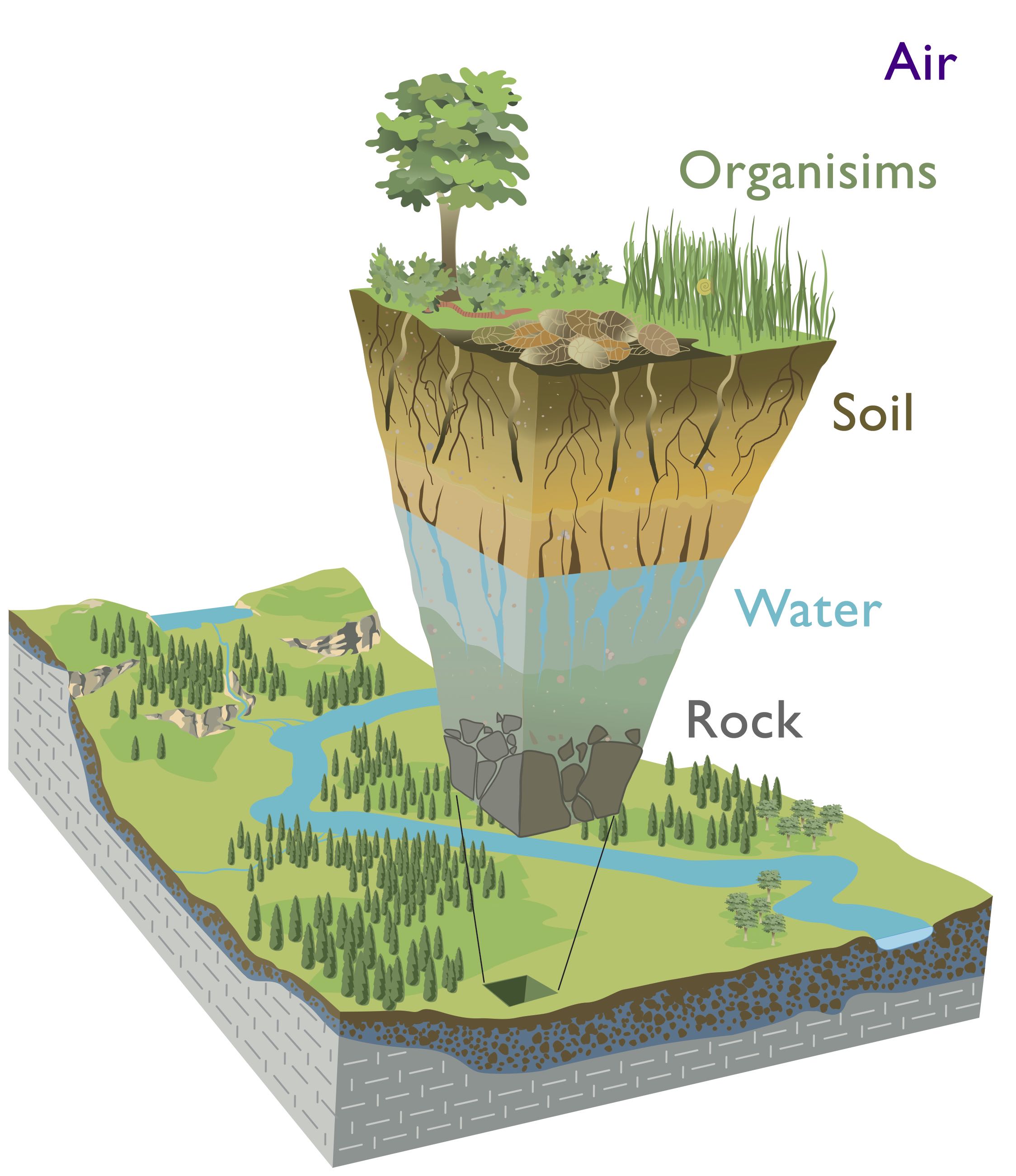Eel River NSF Critical Zone Observatory

Eel River Critical Zone Observatory
The
critical zone is defined as earth's outer skin, the zone where rock meets life. This is the thin shell of our planet that is responsible for most of the chemical and energetic transformations that help sustain life and shape the earth's surface.
Will changes in critical zone currencies induced by climate or land use change lead to threshold-type switches in river and coastal ecosystems?
River habitats and the ecosystems they sustain depend on delivery of three currencies from the critical zone: groundwater discharged into channels, its temperature, and its solutes. Local river environments reflect both discharge from critical zones adjacent to the channel and integration of currencies from critical zones upstream, which may be transformed during transport. During warm dry periods, ecological activity in rivers peaks as critical zone discharge wanes. These are the periods of greatest vulnerability for aquatic ecology to changes in the critical zone.
Like many western North American rivers, the Eel historically supported iconic Pacific salmon populations, now in severe decline throughout California (Katz et al., 2012). Eel River salmonids are fueled by edible algae and invertebrates (Power et al., 2009). Edible algae, primarily diatoms, are favored in rivers flushed with relatively cool discharge, under low extrinsic nutrient loading. As flows decrease, nutrients increase and temperatures warm, the algal base of river food webs shifts toward less edible, then toxic, algae (i.e. bloom-forming cyanobacteria (Paerl and Huisman, 2008, 2009)). Under these eutrophic states, fish cannot survive and degraded water quality threatens the health of humans, pets, and livestock. In the Eel River, linkages between critical zone dynamics and ecosystem transitions of widespread conservation, economic, and public health concern can be studied in a landscape just as it first approaches the transition edge. |

